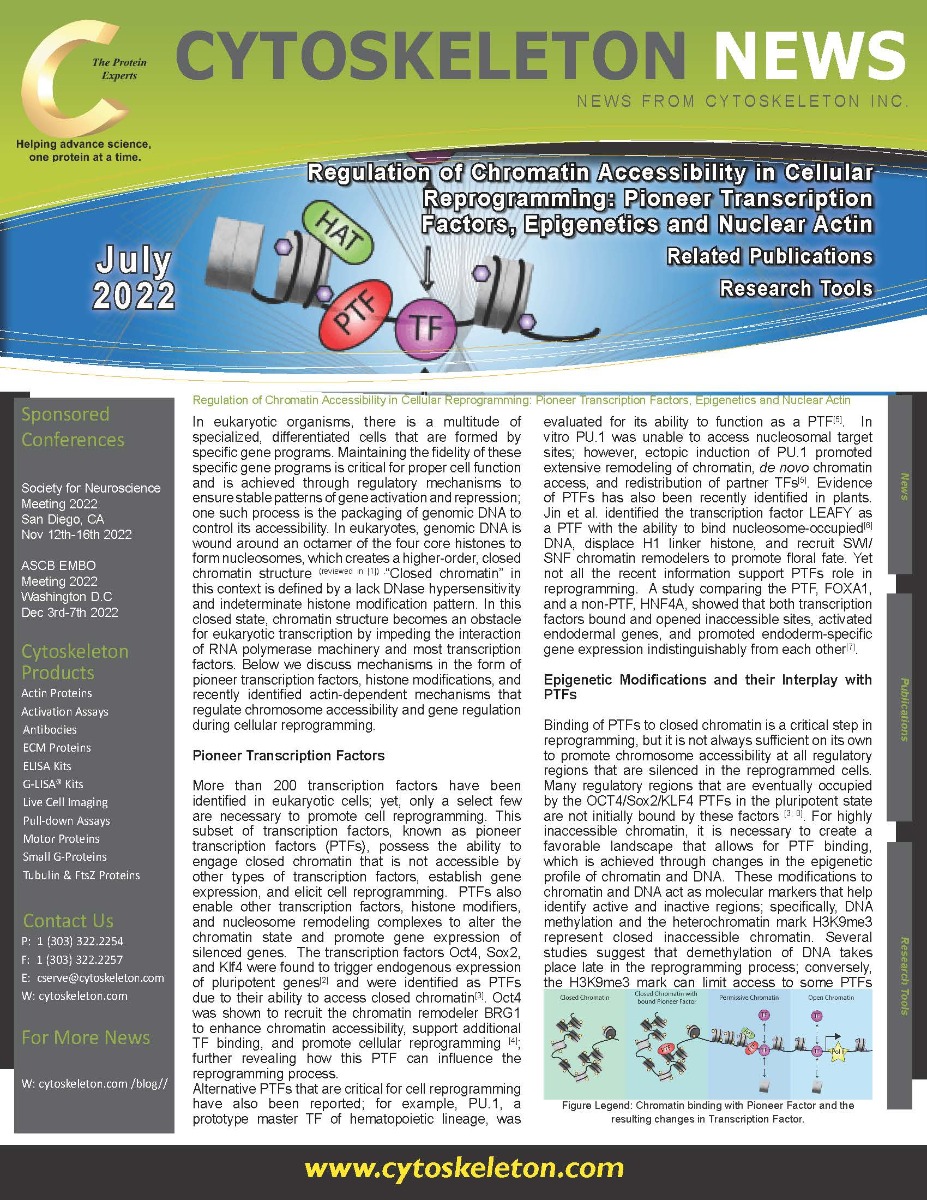Regulation of Chromatin Accessibility in Cellular Reprogramming: Pioneer Transcription Factors, Epigenetics and Nuclear Actin
- By Cytoskeleton Inc. - Signal-Seeker News
- Jul 6, 2022

In eukaryotic organisms, there is a multitude of specialized, differentiated cells that are formed by specific gene programs. Maintaining the fidelity of these specific gene programs is critical for proper cell function and is achieved through regulatory mechanisms to ensure stable patterns of gene activation and repression; one such process is the packaging of genomic DNA to control its accessibility. In eukaryotes, genomic DNA is wound around an octamer of the four core histones to form nucleosomes, which creates a higher-order, closed chromatin structure (reviewed in [1]) .“Closed chromatin” in this context is defined by a lack DNase hypersensitivity and indeterminate histone modification pattern. In this closed state, chromatin structure becomes an obstacle for eukaryotic transcription by impeding the interaction of RNA polymerase machinery and most transcription factors (TFs). Below we discuss mechanisms in the form of pioneer transcription factors, histone modifications, and recently identified actin-dependent mechanisms that regulate chromosome accessibility and gene regulation during cellular reprogramming.
Also included in this newsletter:
- Acetylation, SUMO2/3, and Actin Tools
- Related Publications

